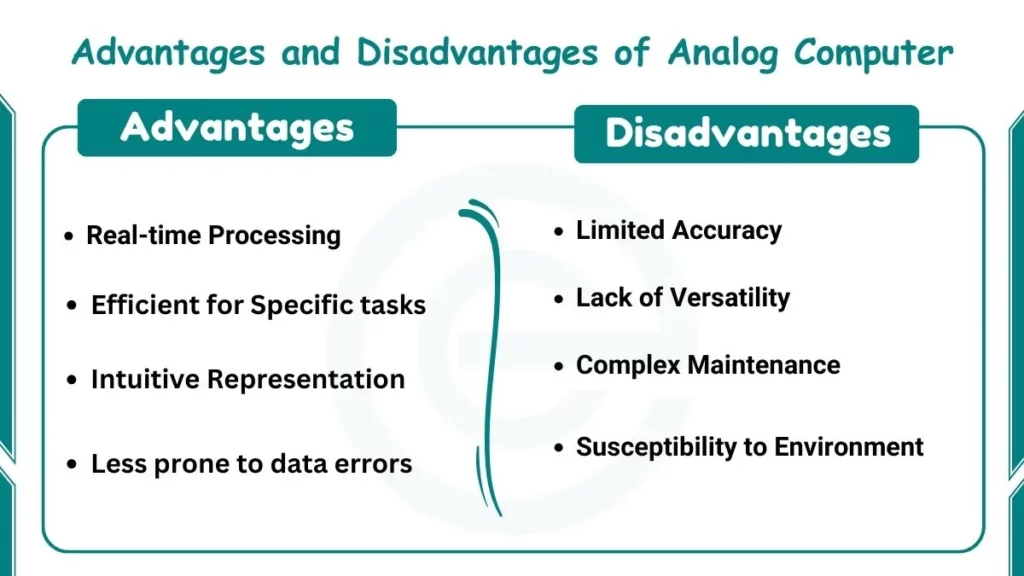Analog computers were an early type of computer that came before digital computers. Instead of using 0s and 1s like today’s computers, analog computers use physical values like voltage or electrical current to represent and calculate data. In comparison, they may seem outdated now.
Advantages of Analog Computer
Here are the benefits of analog computers:

1. Real-time Processing
One of the most important advantages of analog computers was their ability to handle continuous data and provide results in real-time. This made them ideal for simulations and modeling mainly in aeronautics and nuclear physics, where real-time calculations were necessary.
2. Efficient for Specific tasks
Analog computers were very efficient at solving complex mathematical equations. They could often solve these equations faster than digital computers. This was because they could represent and manipulate data as physical quantities providing a more intuitive approach to individual computational problems.
3. Intuitive Representation
Unlike digital computers that use binary code, analog computers use physical quantities like voltage or current to represent data. This made it easier to visualize the problem and understand the computational process. The changes in these physical quantities directly corresponded to the changes in the data being processed.
4. Less prone to data errors
Since analog computers did not rely on a binary system. They were less sensitive to data errors that could arise from bit flips or other digital abnormalities. However, it’s important to note that they were still subject to other types of errors such as those arising from component limitations or environmental factors.
Disadvantages of Analog Computer
Here are some drawbacks of analog computers:
1. Limited Accuracy
While analog computers were efficient for specific tasks. External factors like noise and component limitations often limit their accuracy. Small variations in the physical quantities used to represent data could lead to significant errors in the final result mostly for complex calculations.
2. Lack of Versatility
Analog computers were designed to perform specific tasks and lacked the versatility of modern digital computers. Their limited programmability made it challenging to adapt them to a wide range of applications, as each new task often required a unique hardware configuration.
3. Complex Maintenance
The complex mechanical or electrical components of analog computers made them challenging to maintain. Calibration and adjustment were frequent tasks and even minor issues could lead to significant errors in the calculations.
4. Susceptibility to Environment
Analog computers were highly sensitive to environmental factors like temperature and humidity. Changes in these conditions could affect the physical quantities used to represent data, leading to inaccurate results or even system failures.
Nowadays they have been largely replaced by their more versatile and accurate digital counterparts. The principles and insights gained from analog computing continue to influence different fields from signal processing to robotics.


